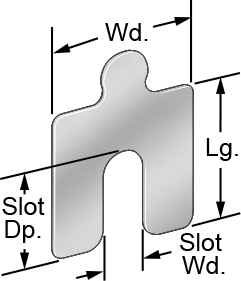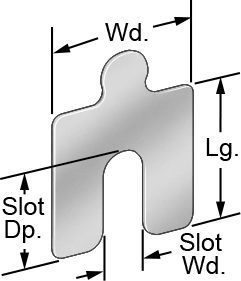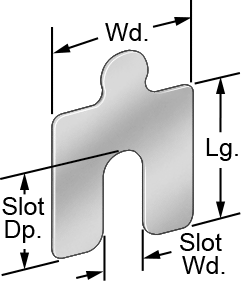-
Welcome back Guest! Did you know you can mentor other members here at H-M? If not, please check out our Relaunch of Hobby Machinist Mentoring Program!
You are using an out of date browser. It may not display this or other websites correctly.
You should upgrade or use an alternative browser.
You should upgrade or use an alternative browser.
Rf31 Won't Tram
- Thread starter sk1nner
- Start date
- Joined
- Feb 1, 2015
- Messages
- 9,625
The conventional method of tramming, i.e. an offset indicator sweeping the table is the most sensitive method. There is an assumption that the table surface is flat and parallel to the ways which is not always true. A simple test will determine if it is true. Mount a DTI in the spindle and lock the spindle. sweep the table in the x and the y directions and note the DTI readings. A flat and parallel table will show no indicator movement.
If this condition does not exist, you can still perform a good tram. mount a piece of plate on the table and mill spots at 0, 90, 180, and 270 degrees from the spindle at the point at where the DTI would touch. For best results, don't change the height but mill a cross pattern. These four spots will now be at the same height. Now perform the tramming test.
Bob
If this condition does not exist, you can still perform a good tram. mount a piece of plate on the table and mill spots at 0, 90, 180, and 270 degrees from the spindle at the point at where the DTI would touch. For best results, don't change the height but mill a cross pattern. These four spots will now be at the same height. Now perform the tramming test.
Bob
- Joined
- Oct 27, 2014
- Messages
- 165
Thankfully the table is level in x and y. I had a few minutes waiting on the neighbor to return my trans jack and an extension (after 3 months!) So I swept the table. The indicator doesn't move until I'm at the far ends of the table, and then it's only about a thou. After the kids go to bed I'm gonna try shimming it again with new shim stock.
- Joined
- Oct 27, 2014
- Messages
- 165
I have gotten it to within a thou. I removed the side shims and took a reading, had about .013. I added 2 layers of shims, it was still out about .007. Another layer got it to about .004. I added one more layer and it was at -.001. For what I do that is more than good enough. I think a lot of my problem was that I was cranking the snot out of the bolts. It seemed a lot more consistent while I was torquing to a set number (33.5 ftlbs, about 400 inlbs). Thank you everyone for your help.
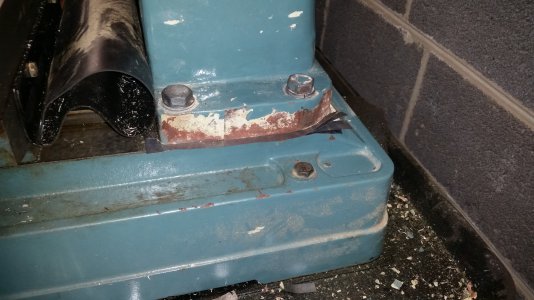
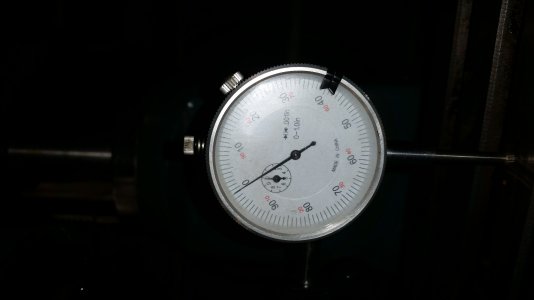
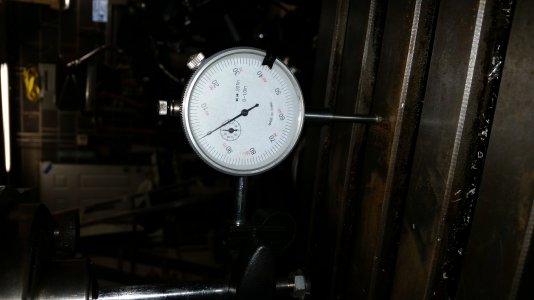



- Joined
- Dec 2, 2012
- Messages
- 1,726
I tried shimming my rf25 round coloum mill, i found that moving the head up and down messed it up and i thought it reduced the rigidity a bit. Interesting to know how that works out between diferent mills.
I tend to shim my vice or the part on the table if i'm tryinto get very flat.
Stuart
I tend to shim my vice or the part on the table if i'm tryinto get very flat.
Stuart
- Joined
- Dec 11, 2013
- Messages
- 302
I would expect that as the original Poster said that his results became consistent once he used a VERY SPECIFIC Torque Value on the Column Bolts.
Another good question/potential issue might be what was the material used for the SHIM Stock?
Brass, and Aluminum might compress differently than steel shims.
Repeated re-use of the same shims may even give different results if the shim stock compresses..
Another good question/potential issue might be what was the material used for the SHIM Stock?
Brass, and Aluminum might compress differently than steel shims.
Repeated re-use of the same shims may even give different results if the shim stock compresses..
Last edited:
- Joined
- Feb 1, 2015
- Messages
- 9,625
- Joined
- Apr 1, 2013
- Messages
- 1,142
I used .006 steel shim stock. We have rolls of it at work to use as chrome bleeders.
What's a chrome bleeder?


